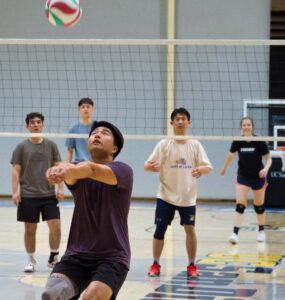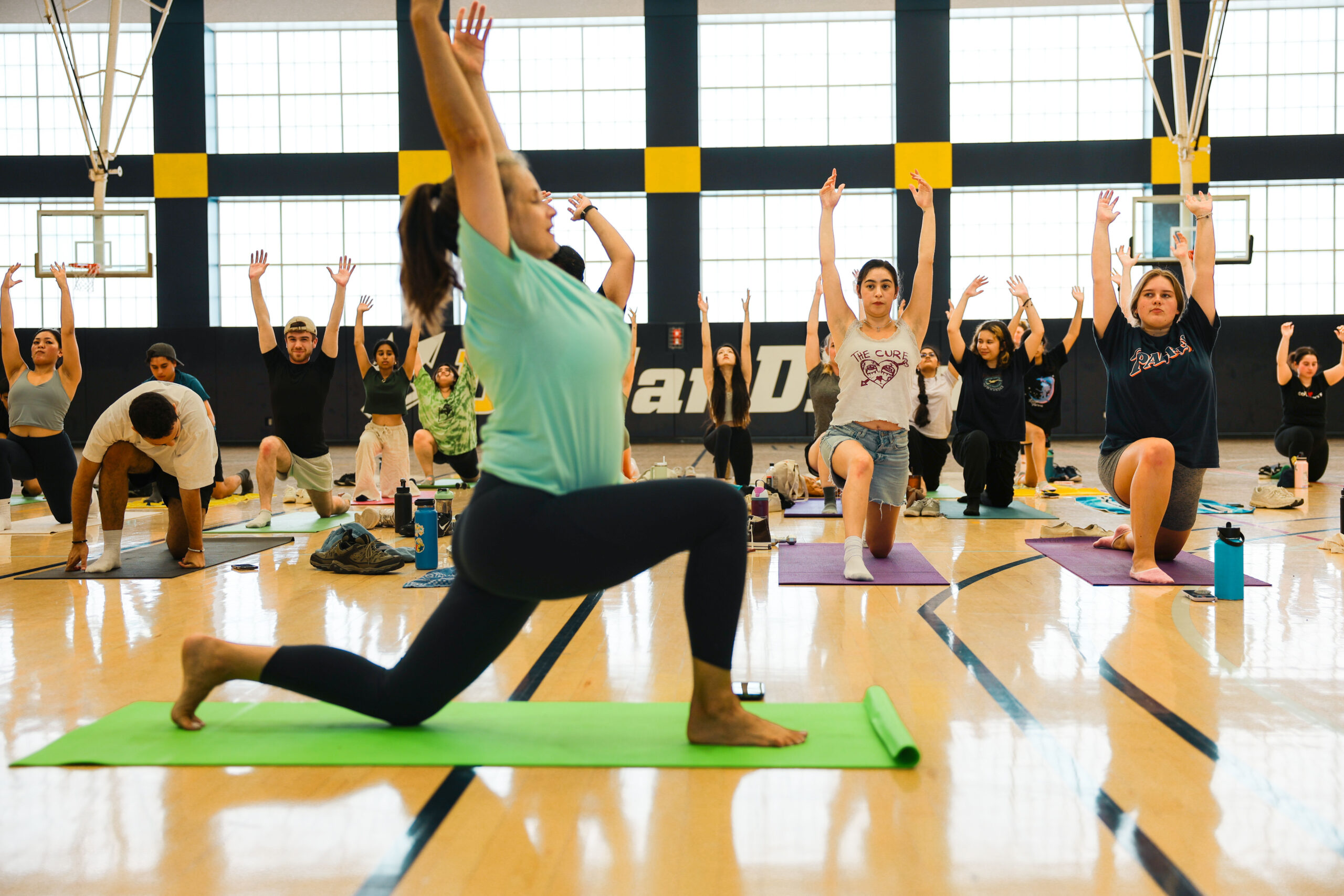4 Ways to Fit Exercise into Your Busy School Schedule
By Brandon Hyatt, MS
Master Trainer
Exercising in college isn’t always easy. While most students won’t think twice about attending extra study sessions, staying up late to finish assignments, and packing in a full academic schedule, many students struggle to fit in exercise (Wilson, 2021). But exercise doesn’t have to be limited to lifting weights or using a treadmill in the gym. It can be anything requiring physical activity, such as sports, recreation, stretching between chapters, or walking to classes.
Despite the challenge students face in becoming more physically active, the role of any type of movement is shown to dramatically improve students’ quality of life, including mental health and academic performance (Snedden, 2019). In this article, we’ll provide tips on how to get more physically active.
Take advantage of UCSD resources and facilities
UCSD boasts several recreation facilities across campus and features programming available to their campus communities. UCSD students are offered a bevy of free exercise options, including access to our facilities (RIMAC, Main Gym, and Canyonview) that can visited during off hours to fill gaps in students’ schedules.
REC also offers students free fitness and yoga classes, free instructional classes, and Outback Adventure trips. Some of our instructional class offerings include aerial silks, martial arts, dancing, and tennis — just to name a few. REC also offers personal training, for those who'd like 1-on-1 instruction. Furthermore, if students sign up for the RAP (Recreation Activity Pass), they can access lots of free programming.
For those who need to get their competitive juices flowing, UCSD offers Esports, Intramural Sports, Sports Clubs teams, and the fitness- and community-based Masters Swimming program.
UCSD staff/faculty can also sign up to be a REC member for a modest monthly fee which grants access to many of the facilities and programming offered to students.

Volleyball — including men's, women's, and co-ed — is one of the many Intramural Sports that Recreation offers. You can sign up as an individual or as a team. For more information, visit recreation.ucsd.edu/competitive-sports/intramurals/
Consider active transportation to increase your cardio time in between classes
Logistics and travel times differ from campus to campus, with parking to consider, distances to class, and everything in between. The American Heart Association recommends at least 150 minutes of medium-intensity cardio per week, so why not tackle most of that with active transportation from class to class?
Some may not have a choice other than walking as part or all of their transportation or have a physical disability that prevents them from walking. However, if you can walk more or use self-propelled micro-mobility, such as a bicycle — or maybe opt for the stairs instead of the elevator — you’ll improve your cardiovascular health and mindfulness.
Use short, active study breaks
Over-learning or burnout are real things when studying. Our brains can only take so much learning before our efforts to study experience diminishing returns. A short study break — even 5 to 15 minutes long — is an impactful investment of time that will lead to more efficient studying and mental health benefits.
A study break will work best if you can be present without technology distractions. Here are some easy study break ideas:
- Go outside and let the sunshine touch your body
- Take a lap around the Geisel Library
- Do some stretches at or next to your desk
- Look at something far away to give your eyes a break
Look for an on-campus student group centered around physical activity
You may not realize how many clubs or groups are centered around physical activity. You can find out what groups are on your campus by checking out official clubs during campus events or by looking for posters in communal areas, such as UCSD social clubs. UCSD also offers 30 Sports Clubs teams that compete competitively at the college level. Here are some common activities that usually have a club or group:
- Barbell/lifting
- Running
- Disc golf
- Dance
- Archery
By joining or participating in an activity you enjoy as a student, you’re more likely to have a balanced student life, make friends, and be happier.
Find what fits best for you
Incorporating physical activity into your college routine may seem challenging, but the benefits go beyond physical health. Whether through organized campus activities, active transportation, or simple study breaks, staying active can significantly enhance your mental and physical well-being.
You can improve your quality of life, academic performance, and overall college experience by taking advantage of available resources and finding enjoyable ways to move. Remember, the key is to find what works for you and make it a consistent part of your routine.
Brandon is one of REC's professionally certified personal trainers and can work with you to develop a safe and effective individualized workout plan to help you achieve your goals. Learn more about personal training and sign up for your first session today.
Sources
-
Wilson OWA, Panza MJ, Evans MB, Bopp M. A Scoping Review on College Student Physical Activity: How Do Researchers Measure Activity and Examine Inequities? J Phys Act Health. 2021 May 11;18(6):728-736. doi: 10.1123/jpah.2020-0370. PMID: 33979780.
-
Snedden TR, Scerpella J, Kliethermes SA, Norman RS, Blyholder L, Sanfilippo J, McGuine TA, Heiderscheit B. Sport and Physical Activity Level Impacts Health-Related Quality of Life Among Collegiate Students. Am J Health Promot. 2019 Jun;33(5):675-682. doi: 10.1177/0890117118817715. Epub 2018 Dec 26. PMID: 30586999; PMCID: PMC7213817.


